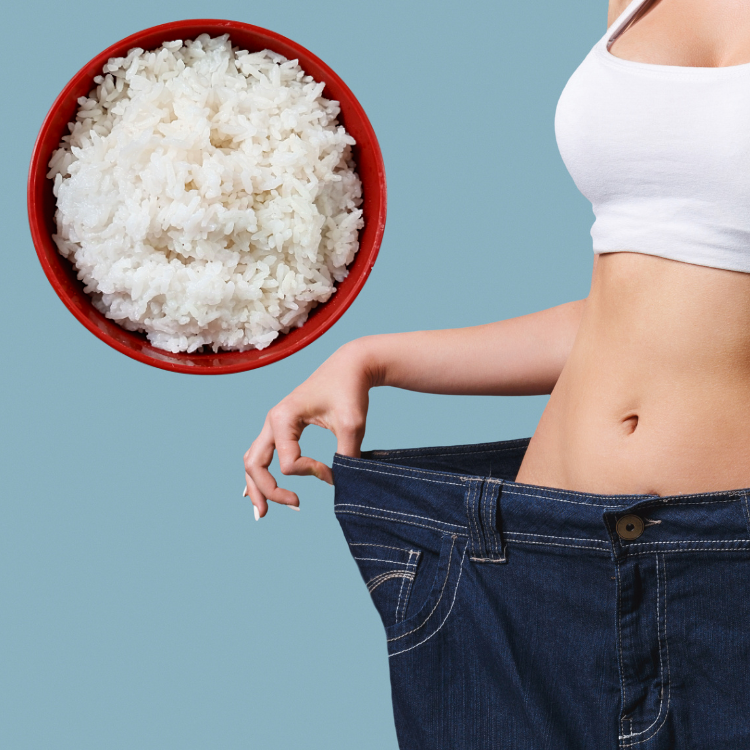When it comes to weight loss, many people are on the lookout for diets and methods that promise effective results. One such method that has gained attention is the “Rice Method” for weight loss. Despite rice being a staple food in many cultures, it might surprise some to learn that it can be part of a successful weight loss plan. In this article, we’ll explore what the Rice Method for weight loss is, how it works, and how you can implement it to achieve your health goals.
What Is the Rice Method for Weight Loss?
The Rice Method for weight loss is based on the principles of the Rice Diet, a low-calorie, low-sodium eating plan that emphasizes the consumption of rice, fruits, vegetables, and lean proteins. Originally developed in the 1930s by Dr. Walter Kempner at Duke University, the Rice Diet was initially used to treat hypertension and kidney disease. However, it became widely recognized for its effectiveness in promoting weight loss.
The idea behind the Rice Method is to simplify your diet by focusing on foods that are low in fat, high in fiber, and minimally processed. Rice, particularly brown rice, is the cornerstone of this method due to its nutritional profile. Brown rice is rich in fiber, vitamins, and minerals, and has a low glycemic index, which means it releases energy slowly and keeps you feeling fuller for longer.
How Does the Rice Method Work for Weight Loss?
The Rice Method works for weight loss by promoting a diet that is low in calories, high in nutrients, and balanced in terms of macronutrients. Here’s how the Rice Method can help you lose weight:
- Caloric Deficit: The foundation of any weight loss plan is creating a caloric deficit, where you consume fewer calories than you burn. The Rice Method encourages eating low-calorie foods like brown rice, fruits, and vegetables, which allows you to eat more volume without consuming too many calories. This can help you feel satisfied while still maintaining a caloric deficit.
- High Fiber Content: Brown rice and other whole grains included in the Rice Method are high in dietary fiber. Fiber is essential for weight loss because it helps regulate digestion, prevent overeating by promoting satiety, and control blood sugar levels. A diet rich in fiber can help reduce overall calorie intake by making you feel full longer.
- Low Fat Intake: The Rice Method emphasizes low-fat foods, which can help reduce overall calorie consumption since fat is the most calorie-dense macronutrient. By limiting fat intake and focusing on lean proteins, fruits, vegetables, and whole grains, the diet helps reduce the accumulation of body fat.
- Balanced Nutrition: The Rice Method promotes balanced nutrition by incorporating a variety of food groups, ensuring that you get all the essential vitamins, minerals, and nutrients your body needs to function optimally. This balanced approach helps prevent the nutritional deficiencies that can occur with more restrictive diets.
- Reduced Sodium: One of the key principles of the Rice Method is to limit sodium intake. High sodium levels can lead to water retention and bloating, which can mask weight loss. By reducing sodium, the body sheds excess water weight, contributing to a leaner appearance and better overall health.
How to Implement the Rice Method for Weight Loss
If you’re interested in trying the Rice Method for weight loss, here’s how you can get started:
- Choose the Right Type of Rice: Opt for brown rice over white rice. Brown rice is a whole grain that contains more fiber, vitamins, and minerals than white rice. The higher fiber content helps keep you full longer, making it easier to stick to your diet.
- Incorporate Fruits and Vegetables: Fill your plate with a variety of fruits and vegetables. These foods are low in calories but high in essential nutrients. They add bulk to your meals, helping you feel satisfied without overeating.
- Include Lean Proteins: While rice is the main component of this diet, it’s important to include lean proteins like chicken, fish, tofu, or legumes. Protein helps build and repair tissues, supports muscle mass, and keeps you feeling full.
- Limit Added Fats and Sugars: Avoid adding unnecessary fats and sugars to your meals. Instead, flavor your food with herbs, spices, and natural seasonings like lemon juice or vinegar. This helps keep the calorie content of your meals low while still making them enjoyable to eat.
- Monitor Portion Sizes: While the Rice Method encourages healthy foods, portion control is still important. Eating large portions, even of healthy foods, can lead to consuming more calories than your body needs. Use smaller plates or bowls to help manage portion sizes.
- Stay Hydrated: Drink plenty of water throughout the day. Staying hydrated can help control hunger and support overall health. Aim for at least 8 glasses of water daily, and more if you’re physically active.
- Stay Active: Incorporate regular physical activity into your routine. Exercise complements the Rice Method by helping you burn additional calories and improve your overall fitness.
Is the Rice Method Right for You?
The Rice Method for weight loss can be an effective way to shed pounds, especially if you’re looking for a diet that’s simple, nutritious, and easy to follow. However, like any diet, it’s important to consider your individual health needs and lifestyle. Consulting with a healthcare provider or a nutritionist can help you determine if the Rice Method is the right approach for your weight loss goals.
Conclusion
The Rice Method for weight loss offers a structured yet flexible approach to dieting that can help you achieve your weight loss goals. By focusing on low-calorie, high-fiber foods like brown rice, fruits, and vegetables, you can create a balanced diet that supports long-term health and weight management. As with any diet plan, consistency and commitment are key to seeing lasting results.


